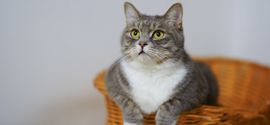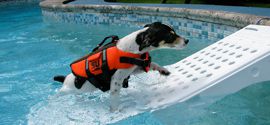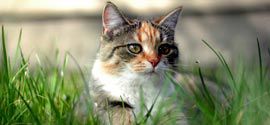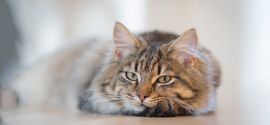Cat Feeding Guide: Feeding Tips & Mistakes
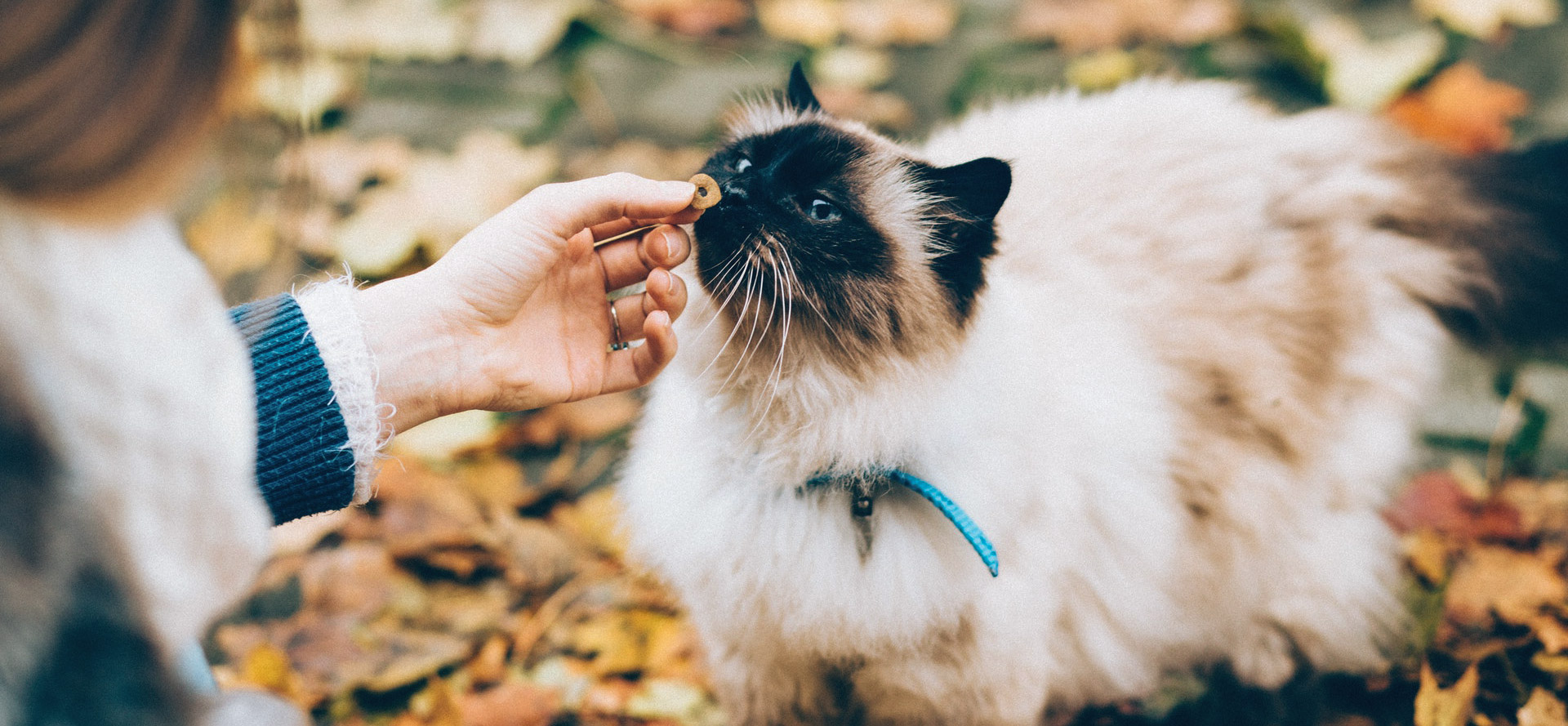
No matter the situation we find ourselves in, it's our primary responsibility to ensure that the people closest to us enjoy the finest things in life. This is highly important in the case of our pet cats, which require feeding to meet their energy and nutrition needs. If you own one of these furry household pets, you need to have a deep understanding of their feeding habits and how to feed them for the best health results.
This article will serve as a guide to cat owners by providing helpful suggestions that will aid you in understanding your pet’s behavior and how to feed them best.
Feeding Behavior of Cats
Before humans domesticated them, cats were solitary hunters and feeders. Among all cat species, lions are the only ones that hunt and eat in groups. This behavior extends into the lives of our fluffy house pets. Even though they sometimes eat alone, they prefer to be fed separately. Also, cats are obligate carnivores which means they require a decent portion of meat in their food to survive. However, they sometimes munch on grass or houseplants to obtain cellulose fibers for digestion.
Factors That Affects Your Cat’s Feeding Habit
How much should you feed your cat? There is no straight answer to this. Numerous factors contribute to the feeding level of these animals, which we will discuss below.
- Cat Feeding by Age: The age of your cat is a huge determinant in its feeding habit. Kittens often grow rapidly, and for this to happen, they require a lot of calories and nutrients. Kittens also need to be fed food rich in protein, an essential nutrient for their growth. Adult cats who have reached their full potential require less protein and calories, and this can be substituted for vitamins and minerals to aid them in aging well.
- Size: There are over 40 breeds of cats worldwide, and these fluffy pets vary by color and size. The size of your cat should be considered when feeding it. As expected, larger breeds such as Maine Coons and the Ragdoll often require more food than smaller counterparts. However, even within these breeds, some individual cats are naturally smaller and need less food.
- Activity Level: The rate of metabolism in any animal is an essential determining factor in the amount of food it consumes. Some cats are known to be very active, jumping from one place to another frequently. This causes them to burn more calories than couch potatoes. Sometimes, the metabolism difference in your cat’s system may also be down to individual differences in their physiology.
- Reproduction: There is a general phenomenon that pregnant and nursing animals require more calories for sustenance. The same applies to cats. Your kitty should have unlimited access to food when she is pregnant or nursing. This ensures that the animal can meet the energy and nutritional demand that reproduction puts them on. In addition to feeding the mother, the kittens also require quality proteinous food for growth.
- Body Condition: In certain instances, the vet might determine that your cat is underweight or obese, which means that the animal needs to add or lose a few calories to stay healthy. For weight gain, your cat needs to take in more calories than it consumes. This means that more high-calorie feeds should be offered to drive weight gain. For obese cats, it is advisable to provide fewer calories which can come in the form of canned diet food.
Cat Food Types
When it comes to feeding your cats, you have two options. You can either go for wet food or dry cat foods. The major benefits of dry food are their lower costs, while wet foods have several health benefits. Let’s take some time to examine what these two diets offer.
Pros of Dry Cat Food
- Dry cat food is easier to measure, and it has a long shelf life after it has been opened.
- Dry food requires more chewing to break down, and as a result, your cat’s teeth stay healthy due to the exercise.
- Dry food can be easily stored in plastic bags, which helps it to maintain a fresh aroma and taste.
- Many cats find dry feed more satisfying because of its crunchy taste.
Pros of Wet Cat Food
- Wet cat foods have a stronger flavor and smell, which makes it easy to entice cats.
- Most cats prefer not to drink still water from a bowl. Wet food can serve as a source of hydration for your pet due to the high water content.
- Wet food is high in protein which is necessary for the growth of strong muscles. Offering your cat more wet food in its senior years helps to maintain lean body mass.
- Cats easily digest wet food, and it supplies them with essential vitamins and minerals.
Wet or Dry Food?
Good feline food should contain all the nutrients that your cat requires. This includes protein, fat, minerals, vitamins, and carbohydrates, all in the correct quantity. Both wet and dry food meet those requirements, provided that they are high quality. The choice is entirely up to you and your kitty. Many cat owners often combine wet and dry foods into their cats' diet to ensure that their kitties get the best of both sides.
How To Feed Your Cat? Feeding Tips
Cats are usually routine-oriented in their habits, which means that they tend to be active around the same time every day. They sleep, eat, and wake up around the same time each day. Most times, they prefer to eat in bits. If you’re always at home, it's advisable to serve their food in small portions and spread it across several hours. This can be challenging if you’re busy or favor a strictly wet diet. In this case, you can offer two meals separated into morning and night. Here are some additional tips that you’ll find helpful the next time you want to feed your cat.
- A combination of dry and tinned food ensures that your cat gets all the nutrient requirements.
- Ensure that food and water bowls are kept away from the litter tray and clean them after each use. Cats often decline food from used bowls.
- Clean water should also be made accessible in cats’ feeding bowls during meals, and another bowl of clean water should also be placed around in case the first one finishes.
- Avoid offering your cat milk. Although our household felines are capable of drinking it, it often upsets their stomach.
- Seize meal times to stimulate your cat to participate in activities by hiding portions of the food or putting them in an activity ball.
- Items like alcohol, onions, chocolate, and lilies are poisonous to cats. Ensure that they are kept in areas that are inaccessible to your kitty.
Common Cat Feeding Mistakes
Old and new cat parents often make common mistakes when feeding your pet. It is important to phase out these mistakes to avoid costly and fatal health implications in your pet feline. Below are common cat feeding mistakes that you should avoid.
- Overfeeding: One of the common mistakes that people make when feeding their cats is overfeeding. Most people think a pudgy house cat is cute, but obesity in cats can have damaging health impacts as it does in humans. An obese cat is more liable to suffer diseases like diabetes, arthritis, and urinary tract infection. The ideal calorie requirement to ensure that your cat stays healthy is about 30 a day per pound. If you’re not sure if your cat is overweight, you can schedule a trip to the vet for some expert opinion.
- Offering Too Little Water: Water is a vital element for survival, even among cats. In kitty’s, the universal liquid makes up as much as 70% of their body weight. When water deprivation gets serious, your cat becomes unhealthy, and in some cases, death occurs. Pay attention to where the cat likes its water and place it there.
- Feeding Garlic for Tapeworms: There is a common misconception that garlic can be used to drive away parasites like tapeworm from your cat’s system. However, no official study has been able to prove that cats benefit from consuming garlic. In fact, high quantities of garlic can destroy the cat’s red blood cells. If you notice tapeworm in your cat, the best option is to visit the vet.
Conclusion
If you made it to the end of this article, you should have good knowledge of how to feed your cat correctly. Do not leave without checking out our best pet product reviews. Here you will find everything that fits your budget and taste.
FAQs
How often should I feed my cat?
If you’re home all day, it is better to feed your cat a small portion several times in the day. If that’s not the case, a meal in the morning and another at night is appropriate.
How much should I feed my cat to lose weight?
The secret to losing weight is consuming fewer calories than the body burns. You can switch the feeding plan by offering canned diet meals several times a day to get your cat to lose weight.
When should I stop feeding my cat kitten food?
It is important to feed your kittens formula for up to a year to ensure that they get all the nutrients required for growth. After that, you can gradually switch to adult cat food.
When to start feeding kittens cat food?
Kittens can begin eating solid cat food from about four weeks old. You can start with soft canned food to get them accustomed to chewing.
Tags: pet supplies, treadmills for dogs, kitty grass, double cat hammock, can cats eat hot dogs, doggie bath tubs, small dog bandana, orthopedic dog bed large, electronic dog door review, high pitch dog whistle

